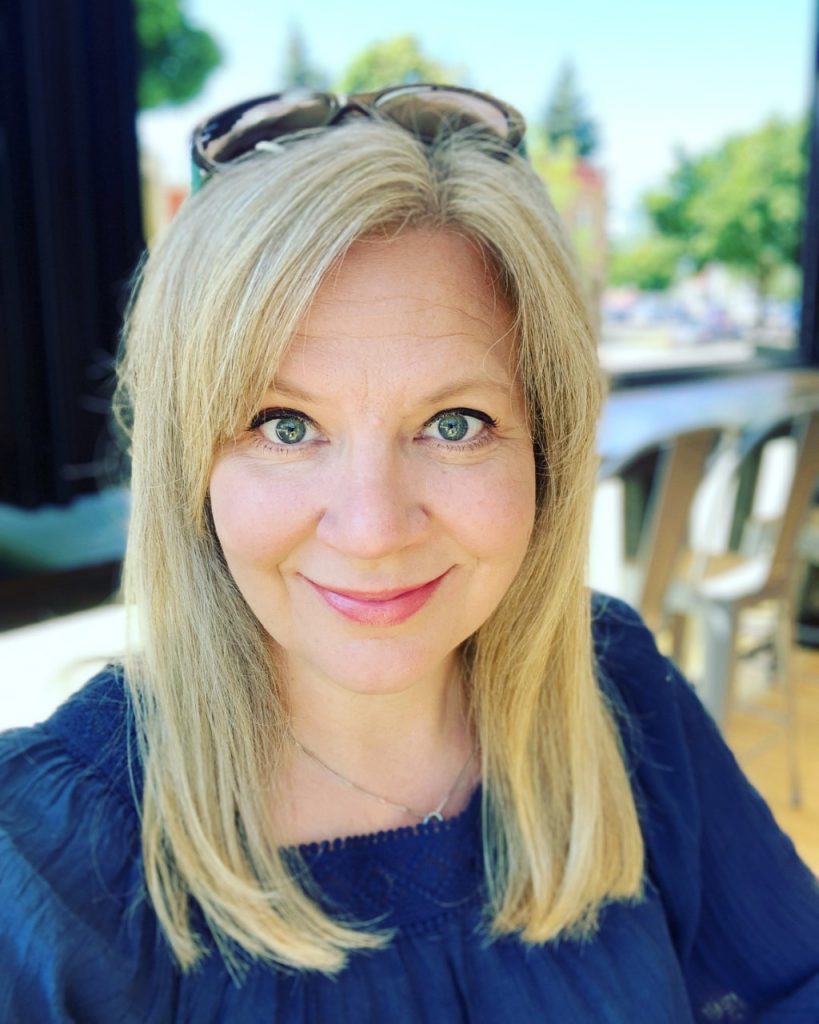If you’re anything like me, you want to hang on to those last moments of summer—the sparkle of sun on Lake Michigan waves, the freedom of shorts and t-shirts, and the fantasy of endless time to read and write…
That fantasy is fulfilled by Emily Henry’s novel Beach Read, which is officially categorized as both women’s fiction and contemporary romance on the publisher’s website, a distinction that’s important given the story she tells. This New York Times bestseller was published in May 2020, and is a meta-romance, one of my favorite kinds of romance novels. From the title itself, which calls attention to one of the ways romance and women’s fiction is dismissed as a light “beach read,” Henry’s novel considers some important genre distinctions and ongoing “genre wars.”
Our heroine, January Andrews, is a popular romance author who doubts her ability to believe in happy endings after a family death and the secrets it exposes. On deadline, single, and broke, she retreats to a home on Lake Michigan to try and salvage her career. There she reunites with our hero, Augustus “Gus” Everett, her former creative writing class nemesis and secret crush. Gus, the darling of the literary fiction world, is also reeling from a break-up, and grappling with his own dark past. Gus lives next door to the house where January is staying—a kind of forced proximity that makes my heart soar.
Henry uses both romance and literary fiction conventions and tropes as she tells January and Gus’ story, and smartly suggests that these literary genres, so often at odds, have more in common than we give them credit for. I deeply appreciate this message as someone who reads in both genres, and detests the disdain for the other genre from both corners. From authors like Diana Gabaldon eschewing the romance label for her Outlander series, to the literary drama at the heart of “Franzenfreude,” there’s ongoing dismissal of romance and women’s fiction. As I’ve become more deeply embedded in Romancelandia—the community of romance fans, writers, scholars—I’ve been bothered by proud declarations that folks don’t read literary fiction or classics. It’s still true that literary fiction garners respect and awards while popular romance garners wider readership. Ultimately, at the heart of the success of both genres is solid storytelling and artful writing, with characters we care about and want to see succeed.
January and Gus challenge each other to write in each others’ genres as a way of breaking out of their writing slumps. They take each other on what writing instructor Julia Cameron would call “Artist’s dates” to help them connect more deeply with these genres. January’s activities for Gus include a carnival, line dancing, and a drive-in movie theater. Gus takes January on various research trips—interviews and site visits—for the dark novel he’s writing about a cult. Because Beach Read is primarily a romance, many of these trips end with January and Gus’s attraction simmering, sizzling, or boiling over in the most delightful ways.
During the summer of 2020, there have been debates on Romance twitter about including challenging, dark context in the genre. Does the genre’s insistence on the HEA (happily ever after) or HFN (happy for now) make darker books possible? What’s too dark? Beach Read shows us characters with real trauma in their past—from childhood abuse to cancer and divorce. It also shows us how people can work through trauma, shifting the narrative by what they focus on. And this brings me to the genre classification on the Penguin website—is women’s fiction included as a marketing ploy? Or because the novel unpacks the personal trauma of January and Gus? There have been several novels I’ve read this summer that stretch the romance genre definition—particularly around having a central love story. How prominent does the love story need to be for the novel to be considered romance? In the case of Beach Read, it is a central anchor, even as other events spiral out. Gus and January, in their neighboring beach houses, are linked together no matter how far they stray.
The novel was a bittersweet read for me, as the setting is a fictionalized version of the communities where I grew up in west Michigan. Because of the COVID-19 pandemic, I haven’t been home since January, and the loss of summer time with family on the east coast of Lake Michigan has been distressing. Beach Read was both a balm in that it brought me home, and also a reminder of the distance between here—the western shore of Lake Michigan in northeast Wisconsin—and home. And, spoiler alert, as someone who dreams of winning the lottery to buy a Lake Michigan beach house, January’s decision to sell the beach house also breaks my heart—I can think of no better fate than to inherit a Lake house where I can read, ponder genre distinctions, and write my own beach read.

By Dr. Jessica Lyn Van Slooten
Jessica Lyn Van Slooten is an Associate Professor of English, Writing, and Women’s and Gender Studies at the University of Wisconsin Green Bay. She teaches courses on women writers, gender and popular culture, romance writing, and more. Jessica has published numerous articles on teaching and assessing gender studies courses, and popular romance fiction and film. She is currently drafting a romance novel set in a small midwestern town.
